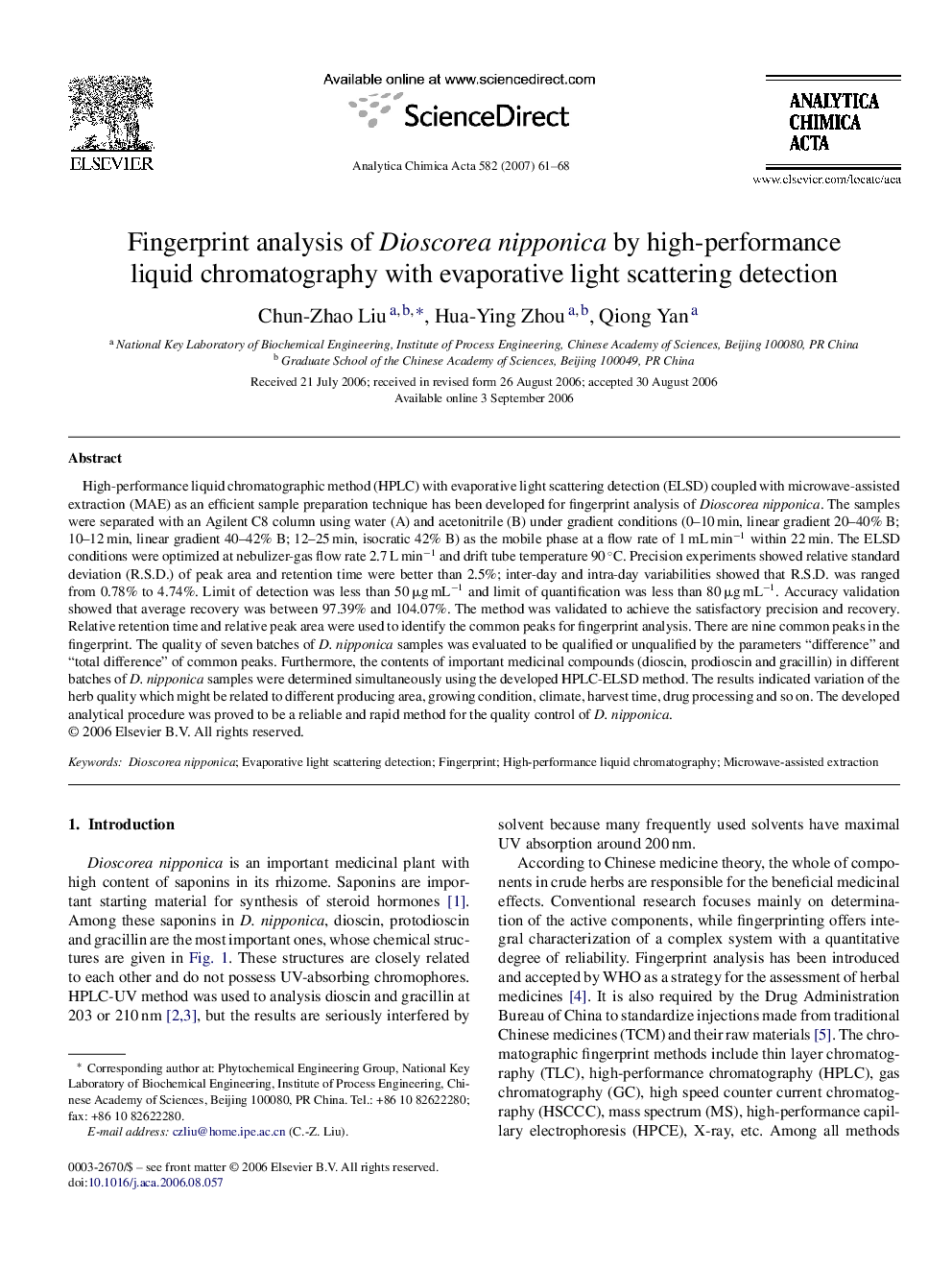| کد مقاله | کد نشریه | سال انتشار | مقاله انگلیسی | نسخه تمام متن |
|---|---|---|---|---|
| 1171481 | 960721 | 2007 | 8 صفحه PDF | دانلود رایگان |
عنوان انگلیسی مقاله ISI
Fingerprint analysis of Dioscorea nipponica by high-performance liquid chromatography with evaporative light scattering detection
دانلود مقاله + سفارش ترجمه
دانلود مقاله ISI انگلیسی
رایگان برای ایرانیان
کلمات کلیدی
موضوعات مرتبط
مهندسی و علوم پایه
شیمی
شیمی آنالیزی یا شیمی تجزیه
پیش نمایش صفحه اول مقاله

چکیده انگلیسی
High-performance liquid chromatographic method (HPLC) with evaporative light scattering detection (ELSD) coupled with microwave-assisted extraction (MAE) as an efficient sample preparation technique has been developed for fingerprint analysis of Dioscorea nipponica. The samples were separated with an Agilent C8 column using water (A) and acetonitrile (B) under gradient conditions (0-10 min, linear gradient 20-40% B; 10-12 min, linear gradient 40-42% B; 12-25 min, isocratic 42% B) as the mobile phase at a flow rate of 1 mL minâ1 within 22 min. The ELSD conditions were optimized at nebulizer-gas flow rate 2.7 L minâ1 and drift tube temperature 90 °C. Precision experiments showed relative standard deviation (R.S.D.) of peak area and retention time were better than 2.5%; inter-day and intra-day variabilities showed that R.S.D. was ranged from 0.78% to 4.74%. Limit of detection was less than 50 μg mLâ1 and limit of quantification was less than 80 μg mLâ1. Accuracy validation showed that average recovery was between 97.39% and 104.07%. The method was validated to achieve the satisfactory precision and recovery. Relative retention time and relative peak area were used to identify the common peaks for fingerprint analysis. There are nine common peaks in the fingerprint. The quality of seven batches of D. nipponica samples was evaluated to be qualified or unqualified by the parameters “difference” and “total difference” of common peaks. Furthermore, the contents of important medicinal compounds (dioscin, prodioscin and gracillin) in different batches of D. nipponica samples were determined simultaneously using the developed HPLC-ELSD method. The results indicated variation of the herb quality which might be related to different producing area, growing condition, climate, harvest time, drug processing and so on. The developed analytical procedure was proved to be a reliable and rapid method for the quality control of D. nipponica.
ناشر
Database: Elsevier - ScienceDirect (ساینس دایرکت)
Journal: Analytica Chimica Acta - Volume 582, Issue 1, 16 January 2007, Pages 61-68
Journal: Analytica Chimica Acta - Volume 582, Issue 1, 16 January 2007, Pages 61-68
نویسندگان
Chun-Zhao Liu, Hua-Ying Zhou, Qiong Yan,